Estimated reading time: 11 minutes.
February/2017 - That Canon doesn’t have a good wide angle zoom past here on vlog do zack, I never failed to mention on my texts. The top zoom EF 16-35mm f/2.8L II USM was the first lens I didn’t recommend on the channel, because it was too expensive for what it offered around the corners, with low resolution and excessive lateral chromatic aberrations, problems repeated on all post-tested wide angle lenses: from the zoom EF 17-40mm f/4L USM and EF-S 10-22mm f/3.5-4.5 USM, to the primes EF 14mm f/2.8 L II USM, EF 24mm f/1.4L II USM and EF 28mm f/1.8 USM. The wide angle was the reason I opened my mostly Canon kit to other brands, like the hiper wide angle Sigma 12-24mm f/4.5-5.6 DG II, an exclusive spec at the time; and even to its main rival, Nikon, and it’s perfect D800E + AF-S 14-24mm f/2.8G, that showed me how a wide angle shot could be clear and sharp. What to expect from another wide angle EF? Enters the 16-35mm f/4L IS USM.
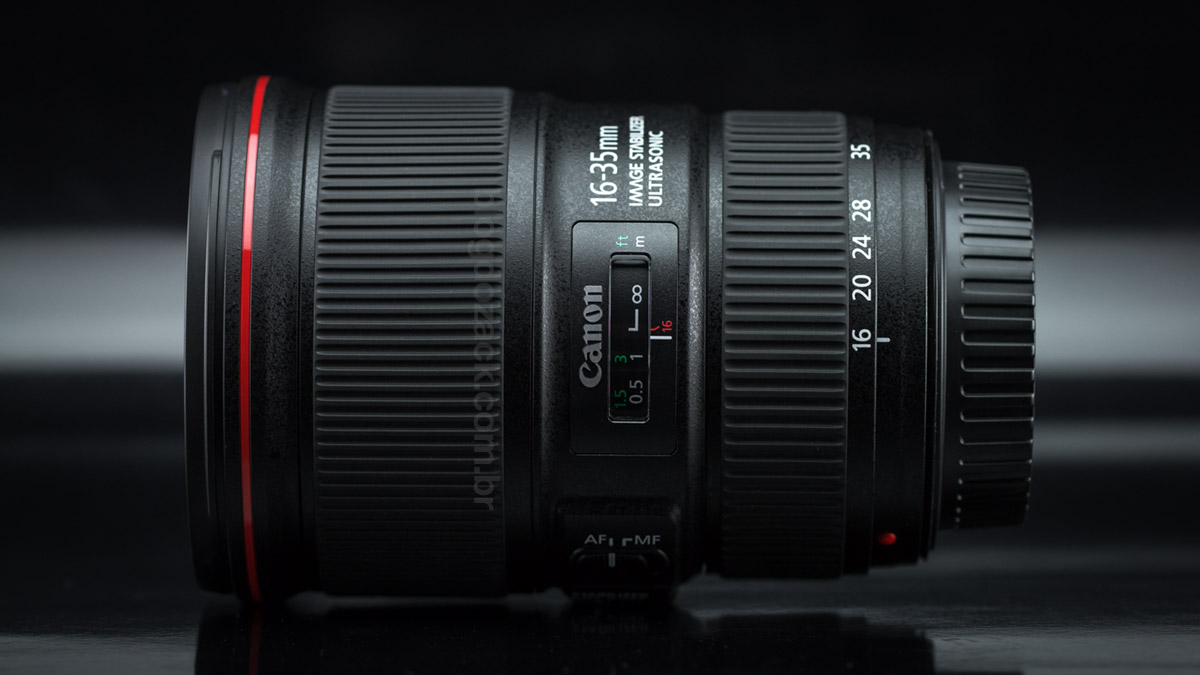
A zoom lens launched in 2014, it had absolutely everything to prove if the brand could handle the wide angle focal lengths. If telephotos were Canon’s speciality, with large aperture primes that could focus instantly, the wide angle field was dominated by Nikon. While the 16-35mm f/4L IS USM doesn’t aim to the top, with a measly f/4 maximum aperture and a built-in stabilizer for practicality, it arrived as a Trojan Horse on the EF lineup, hiding the future gems of the wide angle L-series (11-24mm f/4L USM and 16-35mm f/2.8L III USM). So, did Canon finally prove it can deliver performance on the wide angle? Or is it better to stick with other brands? Let’s find out. Nice reading.
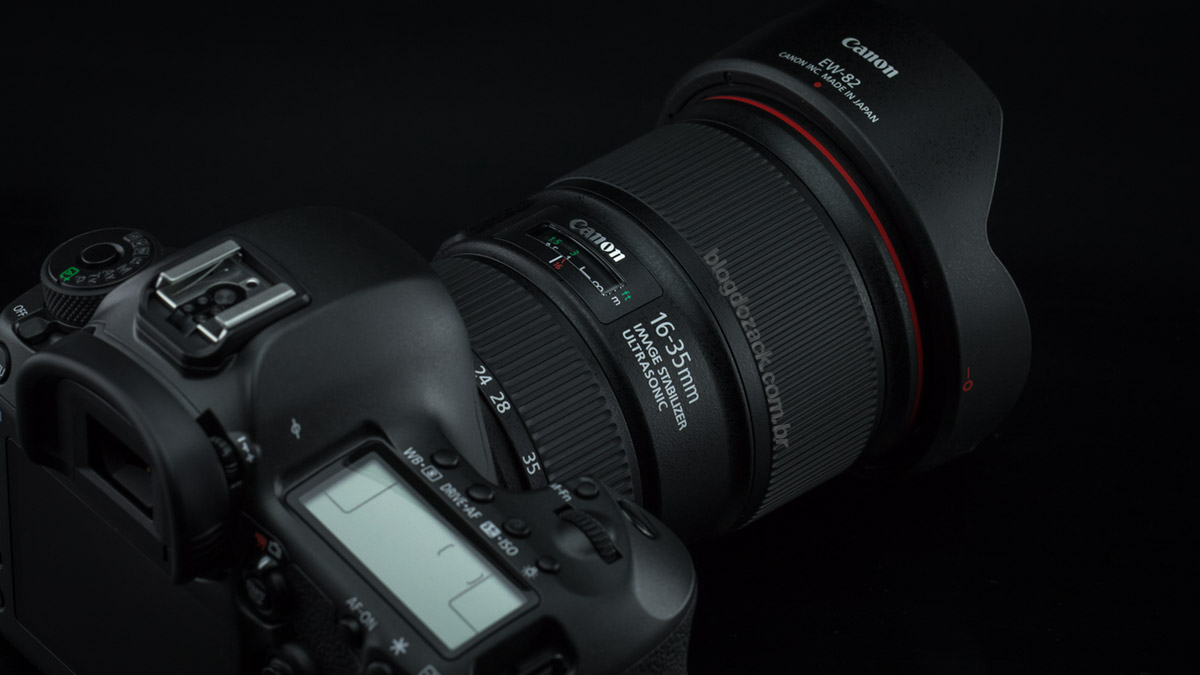
At 8.2 x 11.2cm of 615gr of mostly plastics on the outside and metals (given the weight) in the inside, the first thing we notice on the EF 16-35mm f/4L IS USM is how it grew from the previous f/4L zoom. While the compact 17-40mm f/4L USM is at just 8.3 x 9.6cm of 475gr, almost 1/3 lighter and 15% shorter than the new “f/4 IS”, the new lens is actually at the same class of the specialty 16-35mm f/2.8L II USM (8.8 x 11.1cm of 635gr); or the hiper wide angle Sigma 12-24mm f/4.5-5.6 DG II (8.3 x 11.9cm of 670gr). So it’s a big lens that screams “heavy duty”, perfectly matching Canon’s recent design philosophy of larger, robust products, fitting the full frame dimensions of its best sensors; just as we saw on the EF 24-105mm f/4L IS II USM. It’s time to treat the “f/4 L series” like serious business, and the wish for a “lighter, portable f/2.8 alternative” is gone for good.

In your hands the ergonomics are largely the same of all recent L series, with the “beer can” feeling we get from a near perfect tube. While the 16-35mm f/4 grows from the ø70mm mount to the ø77mm frontal filters, it does in a very discrete fashion, more than the older 17-40/16-35 that sported a “bump” at the front. The streamlined design contributes to a comfortable operation of the lens, once we turn zoom (rear) and focusing (front) rings with the same width as the lens; thus giving the impression of turning a “barrel” with plenty of torque, not just the finger tips. It’s an overall simplification of that design that began on the telephotos from 2011 (notice the difference on the steps of the 300mm f/2.8 I and II), but now applied even on the smaller f/4 L series zooms.
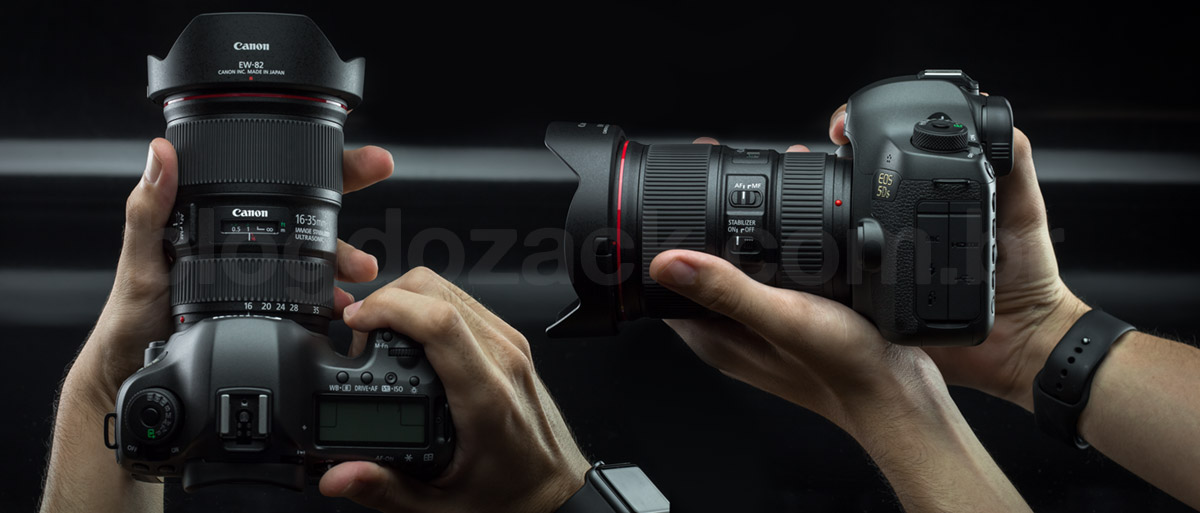
The usability is done via two rings, one zoom at rear with 2.5cm of plastics and 1.8cm of rubber, and a frontal focusing ring with 3.5cm (!) of plastics and 2.8cm of rubber; a questionable decision by Canon. The focusing generally isn’t used much on wide angle lenses, that shows an all-in-focus frame on most compositions, given the longer focal length. At 90º of angle from the minimum focusing distance (0.28cm) to infinity, the ring is quick and smooth to use; the same feedback I didn’t get from the rear zoom ring. The zoom movement is done by a relatively thin rear ring, at 50º from 16mm to 35mm, and it feels “heavy” on my brand new copy. It’s the first time I have such issue with an EF lens, especially an internal zoom one, not expanding the barrel, that usually comes calibrated to a smooth operation out of the box. Compared to the EF-S lenses made for APS-C cameras, this L series can’t stand a chance: the 10-18 STM and the 10-22 USM sports very fluid zoom rings, that I didn’t find on my brand new 16-35mm f/4L IS USM.
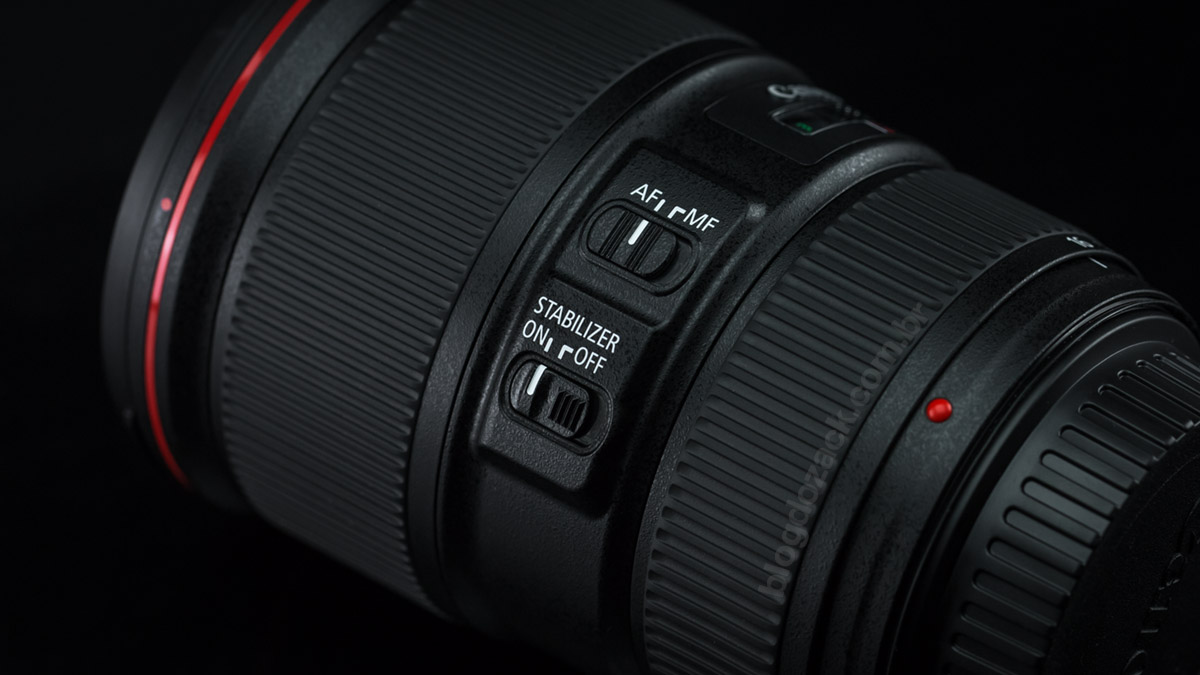
Inside, Canon repeats the ring-type USM and the up-to-4EV stabilizer from newer lenses, both with the best implementations on the market; typically Canon. The auto focus is very fast to run the whole 90º spin at just 0.4s, with a discrete “ron, ron” noise, audible just by the photographer. The manual focusing rings sports full time manual operation, and even at the AF position (via a lateral switch), it’s possible to change the position driven by the camera, not forcing the internal pieces nor losing time moving the switch. It’s a pleasure to use around the streets, as the mechanism feels precise, fast and silent, plus working under any condition: with the 50.3MP monster EOS 5DS, it was possible to shoot inside dark asian temples with every shot in focus, and doing minor manual compensations when I wanted to set hyperfocal distances. It’s notably superior to the EF-S 10-18 STM, that needs a “woken up” camera to operate the fly-by-wire ring, not required by this USM.

The image stabilizer (IS) is another Canon headliner, that promises up to 4 stops of compensation, perfect for those working under low light. Although it does a distinct “chi” noise when activated, no vibrations are shown on the viewfinder and its efficacy it instantaneous, as soon as you half press the camera button; much better than the seconds asked to stabilize a Nikon VR or Sigma OS. While Canon doesn’t offer the standard normal (I) and panning (II) modes found on telephotos, it declares an auto-sensing algorithm that can even detect a tripod. In practice it can register dramatic wide angle compositions with longer exposures effortlessly, and IMHO it should be added to all lenses. Both bigger and more expensive L series wide angle zooms, the 16-35mm f/2.8L III USM and the 11-24mm f/4L USM doesn’t have a stabilizer, and that’s by far the biggest advantage of the f/4 IS: more practical and cheaper, with a purchasing decision coming from that.
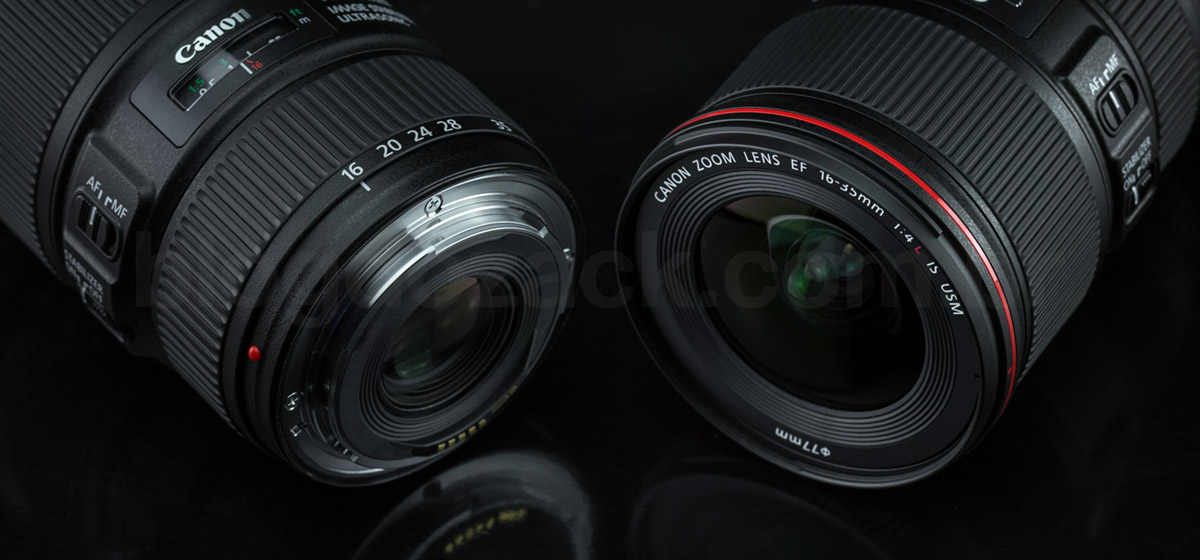
Finally at the front, the ø77mm filters are a welcome addition, perfect to share polarizers and graduated NDs with the EF 24-105mm f/4 L II. At the rear, the 16-35mm IS lost the square gel holder from the previous Ls, to accommodate the bigger glass element, capable of rendering the larger, stabilized image. The front and rear glass elements are fluorine coated, that repeals water and grass, easier to clean. At the top, the distance window displays Canon’s embossed logo, with internal feet and meter markings, reasonably easy to read. And in the box, Canon includes the EW-92 lens hood, that slides in place and locks with a button. The 16-35mm f/4L IS USM is a robust mechanical repetition of newer L zoom series (and even a standard prime), not bringing anything new (nor complicated) to the table. But it all works and it doesn’t stand in the way of the photographer, letting him focus (no pun-intended) on the pictures, not minding the camera.
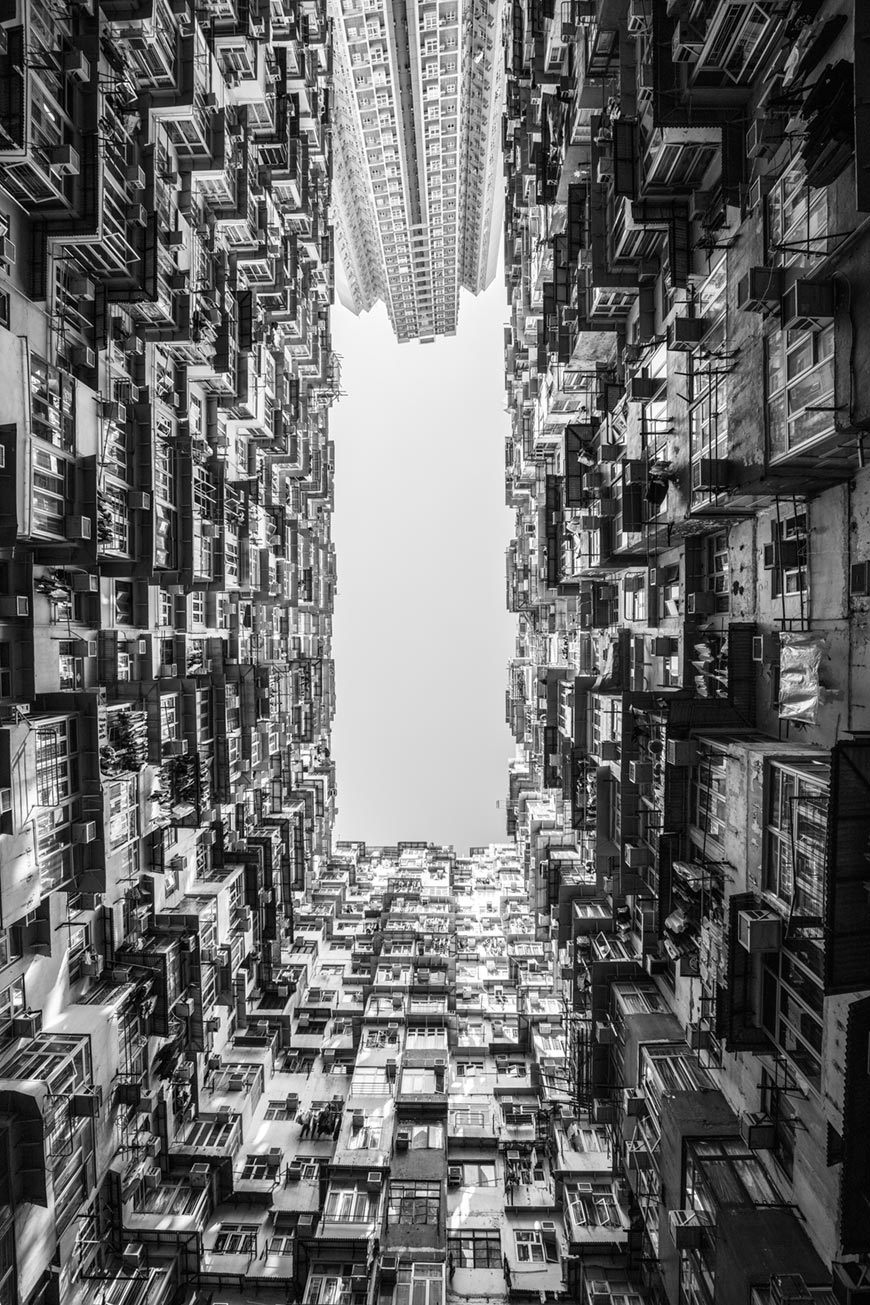
“Yick Fat” at f/6.3 1/160 ISO100 @ 16mm; all photos with the Canon EOS 5DS, raw files available at Patreon.
With a 16 elements in 12 groups optical formula, 02 UD pieces and three aspherical (one large diameter, dual-aspherical glass-molded), the Canon EF 16-35mm f/4L IS USM is nothing less than a mystery on the EF lineup. Practically free of lateral chromatic aberrations and with plenty of resolution around the frame, it leaves the sluggish Canon wide angle performance in the past, similar to the excellent EF-S 10-18mm f/4.5-5.6 IS STM on the APS-C format. It’s a misery because the leap in image quality is brutal, making the new zoom a mandatory piece on most kits. It’s not the richest 16mm super wide angle files on the 5DS; it’s also the best mundane clicks around the streets at 35mm, probably the sharpest 35mm I’ve ever used. It’s not the very low lateral chromatic aberration on the wide angle, extremely discrete around the frame’s edges; but the near invisible geometry distortion at normal focusing distances. The 16-35mm f/4L IS USM is new paradigm for Canon’s full frame wide angle, with the standard L series built and great EOS colors.
Wide open at f/4 and no matter the focal length, the 16-35mm f/4L IS USM files are rich in details on most of the full frame area. A f/value that goes agains the “all-in-focus” wide angle principle, because you wouldn’t shoot so wide if you wanted the whole frame in focus – especially on tridimensional compositions, playing with the frame’s lines -, whenever necessary, at f/4 the 16-35mm simply delivers. For example inside dark asian temples and without a tripod (it’s not allowed), to use the widest aperture to compensate for a slower shutter speed is a no-brainer on Canon’s newest wide angle, because even the corners are sharp, given the good optics. Before, when we shot a picture at f/4 or even f/2.8 on Canon’s wide angle L series, the results were simply chaotic: the lens seemed broken given the resolution and the aberrations. Although some softness is still visible at the frame’s extreme edges, mainly because of the not-so-flat focal plane, the 16-35mm f/4 is a showcase of Canon’s details and clarity, now on the super wide angle.
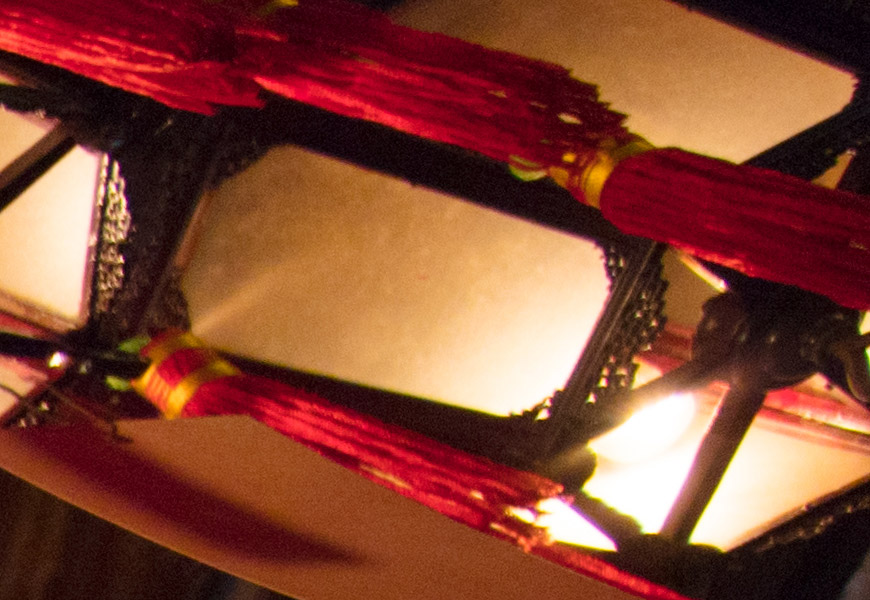
100% crop, believe me, that’s a full frame corner from a wide open, wide angle zoom lens; fantastic!
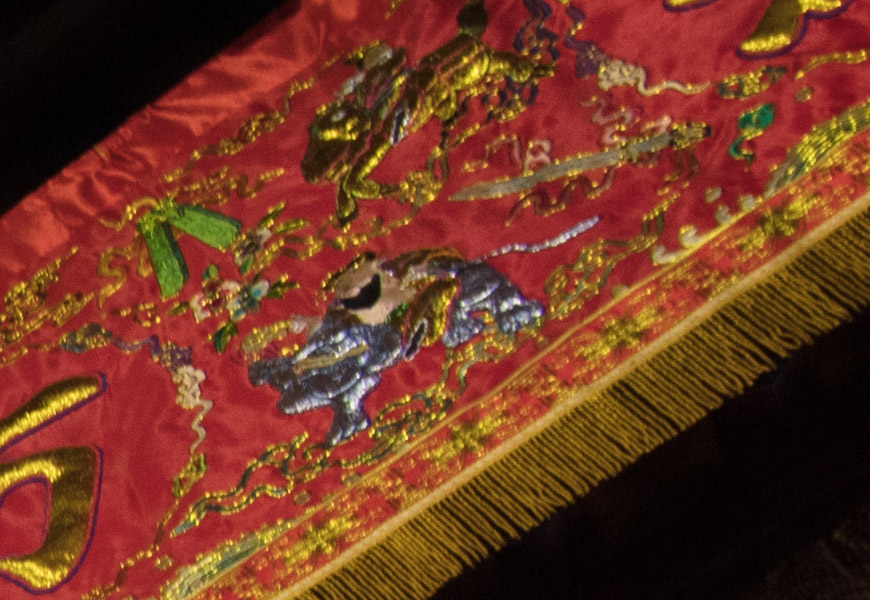
100% crop, it’s hard to distinguish a lack of resolution from the shallow depth of field from a wide angle at f/4, but the 16-35mm IS delivers!
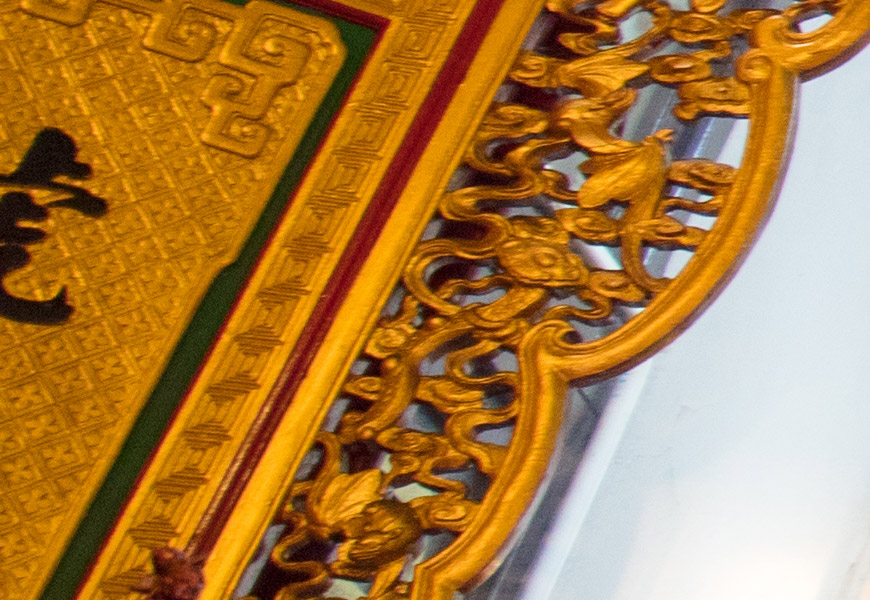
100% crop, details on the frame’s edge, unthinkable for Canon’s previous wide angles; impressive!

100% crop, the 5DS resolving power, paired with a zoom that behaves like a prime, amazing.
Stopping down renders even sharper files, and the 16-35mm f/4 showcases the future of digital photography: zoom lenses that are optically superior to most primes, as we’ve never seen before. Please note: between the 16-35mm are 24mm, 28mm and 35mm; and I’ve never seem sharper files from these focal lengths (maybe here and here). In plain english: it’s fucking awesome! On the same way we can “freeze time” with a faster shutter speed and “see” new things, invisible to the naked eye, the idea now is to register details that are easily missed, given the tremendous resolution: letters and signs are registered to perfection; textures look almost un-real on nature; the complexity of everyday life is revealed at its minimum details. The pronounced vignetting from the f/4 aperture is fixed at f/8, for even cleared files. It’s just fun to admire the 5DS’s 50.3MP files, perfectly rendered on the computer screen, giving a new dimension to the pictures.
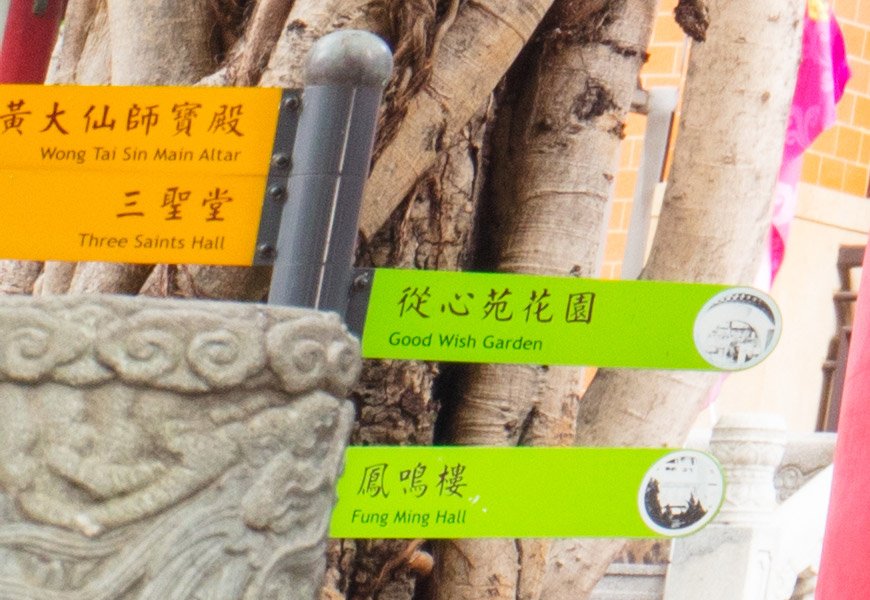
100% crop, frame edges perfectly rendered at 35mm.
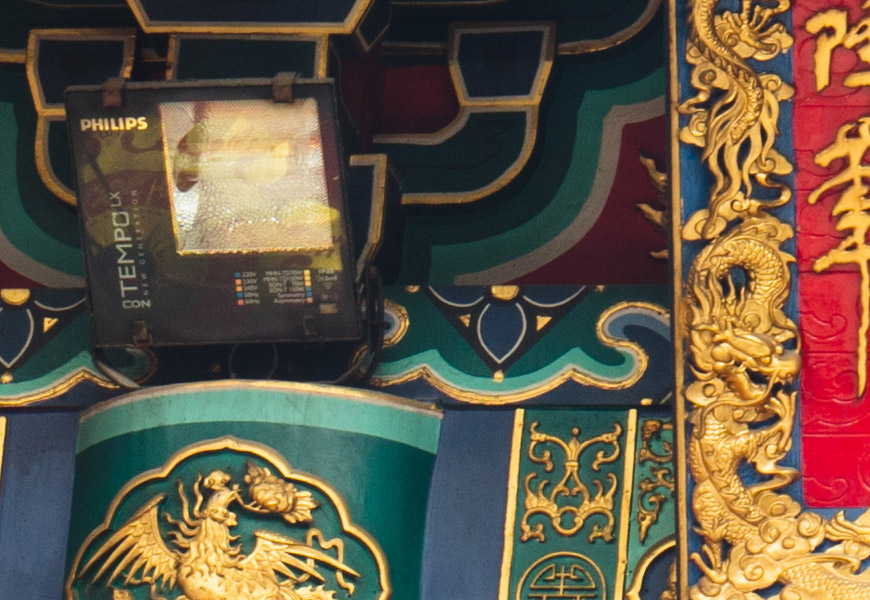
100% crop, the funny 5DS details from its 50.3MP.
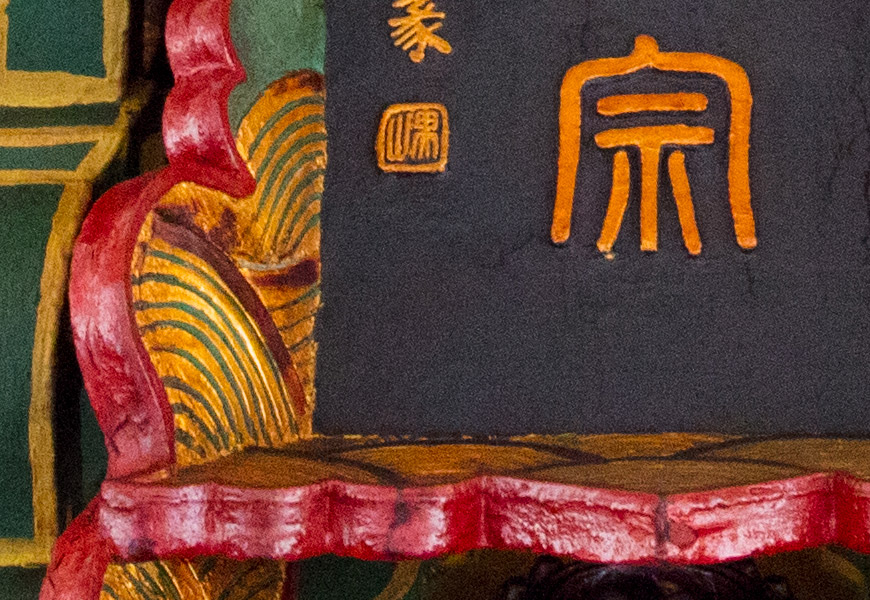
100% crop, the same prime performance, but from an optimized zoom.

100% crop, signs, lines and high contrast edges, perfect.
Lateral chromatic aberrations and geometrical distortion, that haunted Canon in the past, were all corrected on the 16-35mm f/4. The colored lines around contrast edges and the purple halos on spotlights are perfectly fixed on the new formula, with practically no need for software compensations prior to printing. While some chromatic aberrations are visible when we push the files to its limits, like balancing highlights and shadows on Adobe’s Photoshop, plus pushing the contrast, they’re way less visible than before and, I repeat, are at the same class as newer primes. Together with practically invisible geometrical aberrations from normal shooting distances (3 meters and above), be it at the widest 16mm angle or the standard 35mm, Canon’s great optics are useful at shooting videos, when we can’t compensate for aberrations in some cameras. It’s the advantage of a longer wide angle design, with plenty of space to “compress” the large image on the small full frame square, impossible to be done on most short-flanged mirrorless.
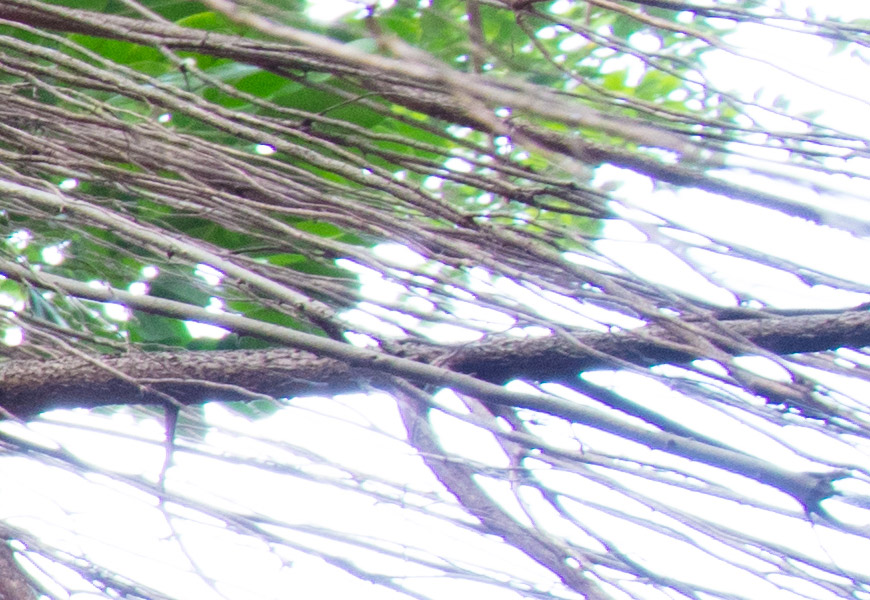
100% crop, worst case of backlit scenario, with no software compensation; it looks great.
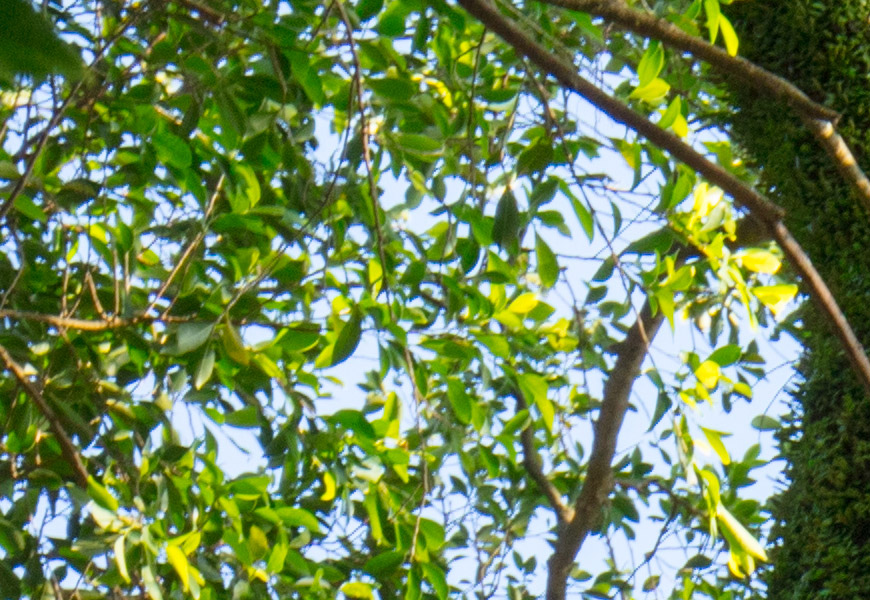
100% crop, practically zero lateral CA, just like the flawless EF 24-70mm f/2.8 L II USM.
Finally colors and bokeh (yes, wide angle bokeh) are punchy on the 16-35mm f/4L; maybe the only quality inherited from prior zooms. The colors are incredible: I took the time to fly back to Hong Kong to the same spots where the 16-35mm f/2.8L II USM was tested, to certify the same tones and contrast from temples shot with the new f/4L IS USM. They are absolute values of green, reds and blues (RGB), that bleed with the slight adjustment in post, perfect for online publishing. The out-of- focus quality is smooth from the new 9-blade aperture, visible near the closest range of focusing. On such limits, the image center shows great resolution for sharp details, with a slight drop of resolution near the edges, that look from a magnifying glass; probably not the best use of this lens. But it works for what it is: high resolution photos, with life-like colors from the L series.

100% crop, the zoom lens limits, at an angle and near the frame’s edge, the image seems from a magnifying glass.

100% crop, out of the minimum focusing distance and at the frame center, the resolution is great.

100% crop, just another example of the great CA handling.
The Canon EF 16-35mm f/4L IS USM is the bottom of the new super wide angle L series, at just US$999 next to the US$1999 EF 16-35mm f/2.8L III USM and the absurd US$2999 EF 11-24mm f/4L USM; both lacking a stabilizer. But this lens couldn’t be farther from basic, creating a new class of equipment on the EF lineup, because it simplifies the spec sheet (f/4) and adds an IS. It does it on a relatively compact body compared to other UWAs, with great ergonomics no matter the tough zoom ring; see it as a ‘variable prime’ and not a “must reset the focal length at all-times” zoom. The internal motors are the usual L series, both perfectly implemented with silent, speed and precision. Optically it’s virtually perfect, putting it at the top of the UWA recommendation list: portable, light and stabilized, you really have to justify the f/2.8 aperture from the 16-35mm III, or require the extreme 11-24mm. After all, this 16-35mm proves that less is always more, and thus it’s indeed mandatory on all full frame kits. Just add it to your lens set, and nice shooting!